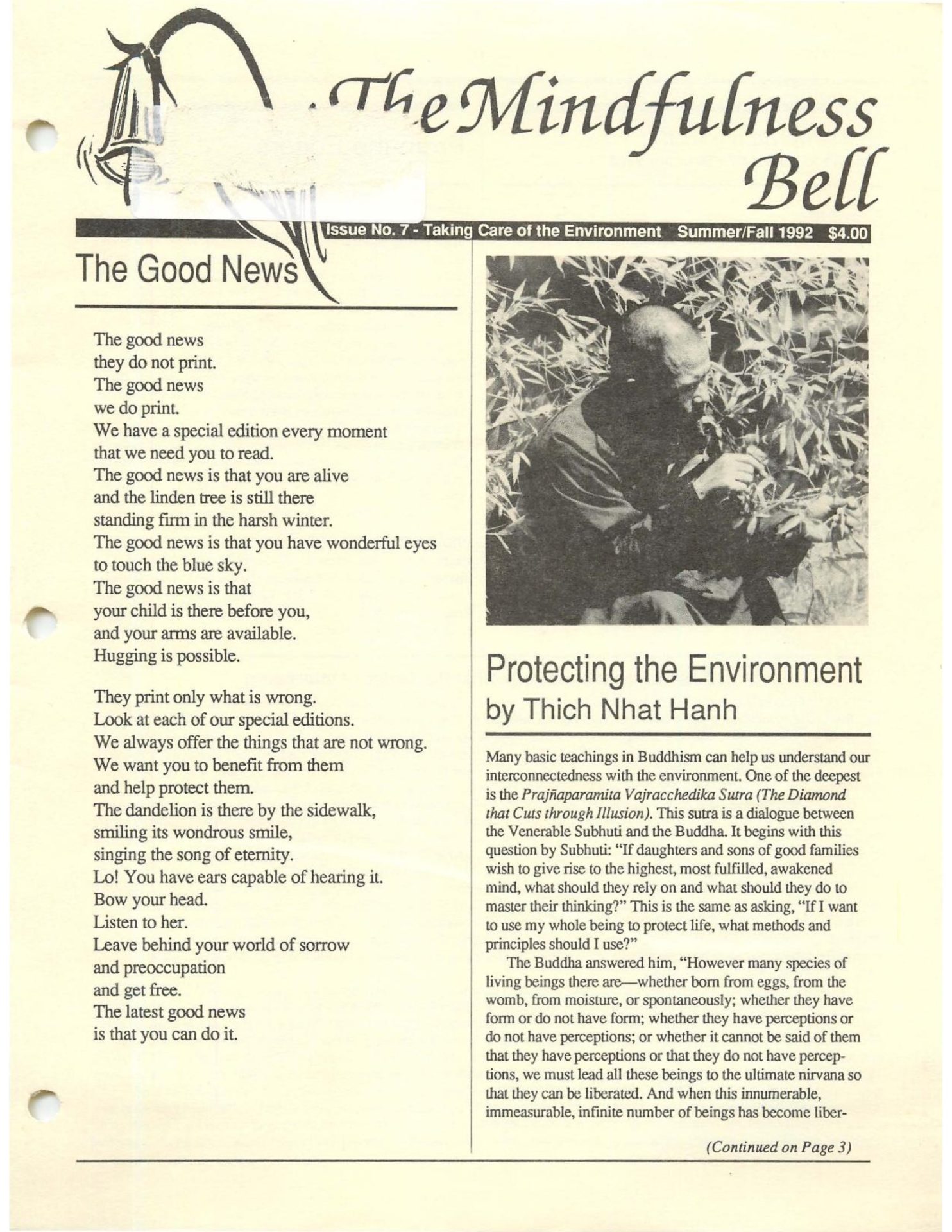By Thomas Urquhart
Easter morning in the Malibu Hills. The full moon comes to rest on a distant ridge, then melts into the cliffs. We stand in a circle and watch the red peaks come alive in the first light, and the shadows retreat from the east down their flanks. The clear note of a bell sounds, and over the mountains behind us, the sun rises. For an instant, it is like squinting through a brass hole straight into infinity.
By Thomas Urquhart
Easter morning in the Malibu Hills. The full moon comes to rest on a distant ridge, then melts into the cliffs. We stand in a circle and watch the red peaks come alive in the first light, and the shadows retreat from the east down their flanks. The clear note of a bell sounds, and over the mountains behind us, the sun rises. For an instant, it is like squinting through a brass hole straight into infinity.
The sunrise service is the conclusion of a six-day meditation retreat with Zen master Thich Nhat Hanh. Some 200 environmental activists had come together from all over the country, representing the movement in microcosm. They came to be healed, to share, and to look for new ways to protect our planet. Some were practicing Buddhists; others, like me, were absolute beginners. It was, by any standard, an extraordinary event and is likely to have made a lasting impression on all those who participated.
Interbeing and mindfulness could be the cornerstones for environmental practice. During the retreat, Thich Nhat Hanh taught us to approach these ideas through breathing meditation, sometimes sitting, sometimes walking. "Let the Earth nourish and refresh you. You only have to breathe in and breathe out to have the sun, the moon, the sky, the mountains; to have eyes to see, ears to hear, feet to climb." To hear these concepts so beautifully invoked, so simply expressed, was a transforming experience.
The week before, heavy rains had broken the drought in California, bringing the chaparral to life again. But they also caused landslides and washed away tons of soil from plots precariously developed on the steep slopes. This dichotomy reminded me that even as we were meditating on ways to heal the biosphere, my colleagues back home in Maine were participating in a conference on economy and ecology. Two gatherings looking in very different ways at the same question: How can we live on Earth? If only these two sides of the environmental dilemma—spiritual and material—could be brought into harmony.
At Maine Audubon, we pride ourselves on our rational, responsible approach to environmental issues. We analyze cause and effect. In our education programs, we layout the evidence for people to make their own choices; and in our advocacy we temper this by pointing out what the law requires and ensuring that our natural resources are basically protected. That is the approach we bring to discussions with business and industry. It is an approach that has been generally successful.
But the time has come to complement this approach with one that appeals directly to our spiritual needs. The experience in the Malibu Hills underscored for me the need to breathe new life into the environmental debate. I found myself wondering: if our conferences were preceded by meditation retreats, what might the harvest be? What would it take for such a conference to arrive at a common vision of a sustainable, (no, nurturing) future, one that brings spiritual and material well-being to the world?
Rational debate has allowed us to make great strides in bridging the gap that pits business against the environment. The business community readily concedes that groups like Maine Audubon have raised its consciousness of the need to protect natural resources. But our laws and institutions are still not meeting the scale of the challenge that our expectations have set for us. We drive more, we eat more, we throwaway more than 95% of the rest of the world. The challenge is simply that the rest of the world cannot live the way we do without destroying it. In the face of this fact, and a basic sense of fair play, arguments in favor of or against growth in Maine pale into insignificance.
If we are to challenge the assumption that we can go on "pigging out" at the world's expense, tinkering around the edges is not going to be enough. Our democratic system is not proving decisive enough to deal with the magnitude of global environmental problems. The watered-down legislation it produces cannot meet the scale of the threat. What is needed is for us collectively to tighten our belts and check our consumer expectations. The strength and wisdom to do that, Thich Nhat Hanh suggests, can only come from mindfulness: opening ourselves to the recognition of what our actions mean and do.
That would be a quantum leap in the environmental debate that would transcend taking sides pro- or anti-development. We may have gone as far as we can go regulating the way we do business. We are all in this together: we need a vehicle for recognizing that fact, one that will fire our imagination and resolve. It will have to be powerful enough to connect us individually, institutionally, and governmentally to the Earth. My experience before Easter gave me a glimpse of how we might achieve such a vision.
Thomas Urquhart, Executive Director of the Maine Audubon Society, originally wrote this article for Habitat: Journal of the M.A.S. (Vol. 8, No. 3, June 1991).

